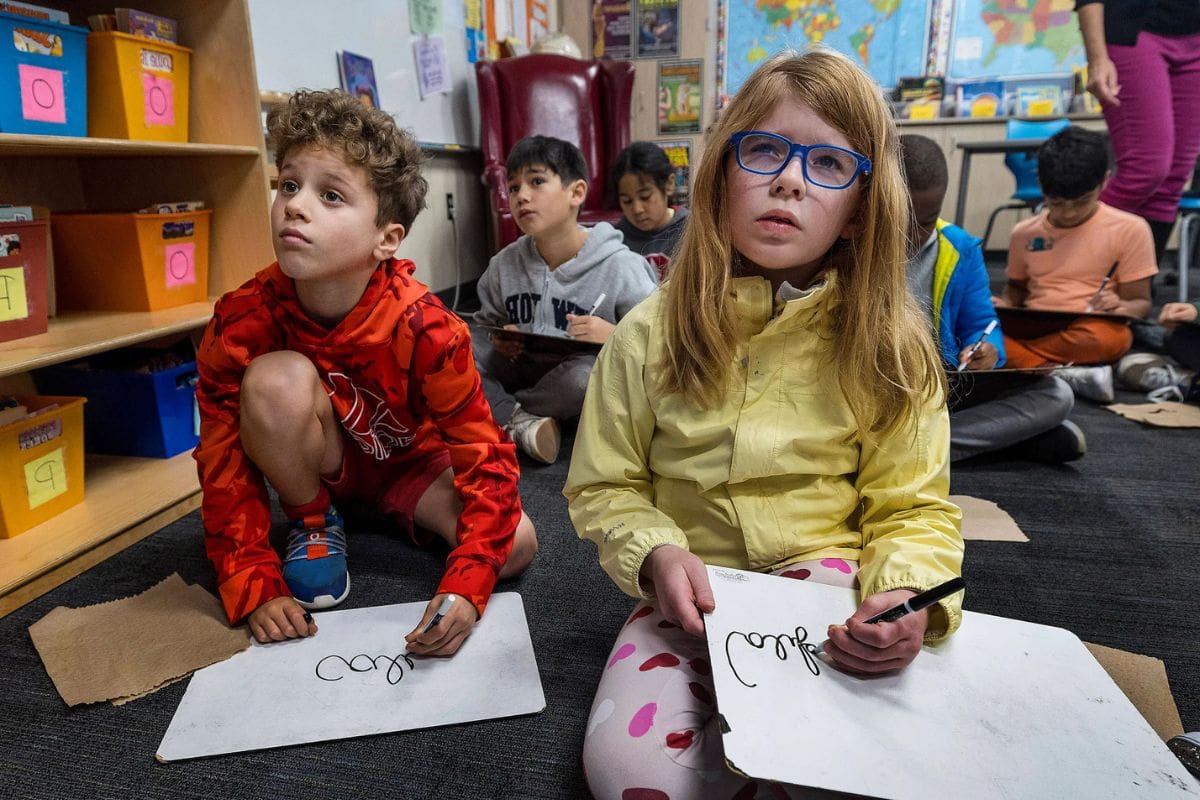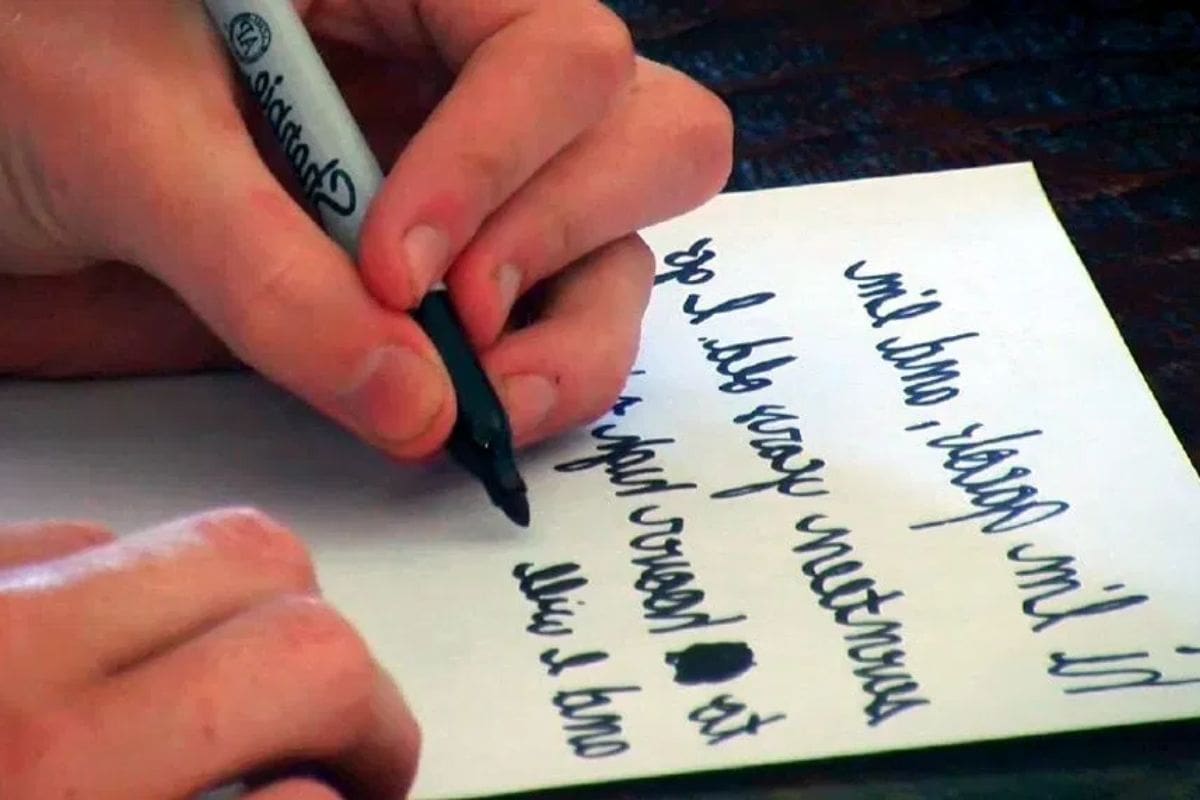Cursive Handwriting Comeback: In an era where digital communication dominates and penmanship skills are quickly fading into obscurity, a surprising resurgence of interest in cursive handwriting has emerged in California schools. As proponents argue for the retention of this traditional writing style, citing its historical and cognitive significance, the movement gains momentum.
But what are the driving forces behind this revival, and how does it fit into the broader educational landscape? This discussion aims to explore the rationale, implications, and possible challenges surrounding the reintroduction of cursive handwriting instruction in California schools, shedding light on a trend that may prove to be more than just a nostalgic throwback.
Key Takeaways
– Cursive handwriting instruction is mandated in California schools through Assembly Bill 446, benefiting approximately 2.6 million students in grades one to six.
– Cursive learning enhances cognitive development, reading comprehension, and fine motor skills, creating stronger connections in the brain.
– Cursive instruction prepares students for success in academic and professional endeavors, providing them with a valuable skill.
– There is a nationwide trend towards embracing the value of cursive writing, with other states considering reintroducing cursive instruction.
Introduction to Cursive Revival in California Schools
The introduction of cursive handwriting instruction in California schools marks a significant revival of a once dwindling skill in the digital age. With the implementation of Assembly Bill 446, grade school students in California are now mandated to learn cursive handwriting starting this year.


Read More: Digital Age Cursive Stages Comeback in California Schools”
This move away from the digital age is an important step towards preserving a skill that had waned in popularity. Approximately 2.6 million Californian students in grades one to six will now receive handwriting instruction, with cursive lessons introduced generally from the third grade onward.
This revival of cursive handwriting in California schools demonstrates a commitment to maintaining a skill that fosters mastery and precision in written communication, setting a precedent for other states to follow suit.
Rationale and Supporters of Cursive Instruction
Cursive instruction in California schools is supported by educators and experts who recognize its cognitive and developmental benefits. Former elementary school teacher Sharon Quirk-Silva sponsored the bill, emphasizing the cognitive development, reading comprehension, and fine motor skills that cursive learning can enhance.
By learning cursive, students develop stronger connections in their brains, as highlighted by Pamela Keller, a fourth-to-sixth-grade teacher. These cognitive connections formed during cursive learning contribute to improved reading comprehension and overall cognitive development.
Additionally, cursive instruction helps students develop fine motor skills, as it requires precise hand movements and coordination. Supporters of cursive instruction believe that these benefits make it a valuable addition to the curriculum, promoting cognitive growth and preparing students for success in various academic and professional endeavors.
Historical and Cognitive Significance of Cursive Writing
Continuing our exploration into the importance of cursive instruction, we now turn our attention to the historical and cognitive significance of this elegant form of writing.
The recognition of cursive writing in historical documents, such as the U.S Constitution, demonstrates its enduring importance. When students encounter these documents, they recognize cursive as a symbol of our nation’s foundation and heritage.


Furthermore, research supports the idea that learning cursive engages different neural networks, enhancing childhood development. Leslie Zoroya, project director for reading language arts at the Los Angeles County Office of Education, explains that cursive learning helps create pathways in the brain and aids in information retention.
This cognitive significance highlights the value of cursive instruction as an essential skill for students to master.
National and Statewide Context of Cursive Instruction
In the national and statewide context of education, the decline of cursive writing has been evident with the rise of computer technology and the omission of cursive instruction in the Common Core education standards. As computer keyboards and tablets became prevalent, cursive writing diminished, and its importance seemed to wane.
However, there has been a recent resurgence in the teaching of cursive writing. California, along with 21 other states, has reinstated cursive instruction in their schools. This shift is significant, as it signifies a recognition of the historical and cognitive significance of cursive writing.
It also reflects a growing understanding of the importance of developing fine motor skills and the ability to read and write in different styles. In fact, five states have already introduced bills to reinstate cursive instruction in 2024, indicating a nationwide trend towards embracing the value of cursive writing.
Implementation, Legislation, and Broader Educational Paradigms
The integration of cursive instruction into educational curricula reflects a broader shift towards recognizing the cognitive benefits and historical significance of this traditional writing style.
California’s legislation, effective from January 1, 2024, aims to ensure that students leaving sixth grade possess the ability to read and write in cursive. This development marks a departure from the prevailing trend towards digital communication in recent years, acknowledging the importance of preserving and honing traditional skills.
As cursive makes a comeback, it brings with it a multitude of benefits, such as improved hand-eye coordination, enhanced fine motor skills, and increased reading comprehension.


The reintegration of cursive into classrooms not only helps students develop valuable cognitive abilities but also connects them to the past, fostering an appreciation for the rich historical and cultural heritage associated with this elegant form of handwriting.
Conclusion Of Cursive Handwriting Comeback
The revival of cursive handwriting in California schools is gaining momentum due to its historical and cognitive significance.
Supported by various educational stakeholders, the implementation of cursive instruction aligns with broader educational paradigms. As legislation is being introduced to ensure its inclusion in the curriculum, the resurgence of cursive writing reflects a recognition of the value it brings to students’ learning experiences.
Its reintroduction not only preserves a traditional skill but also enhances cognitive development and communication abilities.
Our Reader’s Queries
Q1 Why cursive handwriting needs to make a school comeback?
A Educational experts suggest that acquiring cursive writing skills enhances cognitive development, reading comprehension, and fine motor skills, among other advantages. Additionally, some educators see merit in teaching children to interpret historical documents and family letters from previous generations.
Q2 Is California bringing back cursive writing?
A In a recent development, traditional handwriting is experiencing a resurgence in schools following the signing of a new bill into law. Governor Gavin Newsom of California signed the bill on Friday, mandating cursive instruction for students in first through sixth grade.

